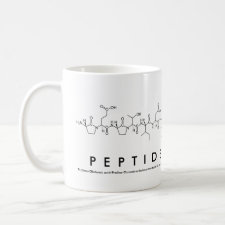
Authors: Zheng C, Liu ZS, Gao RY, Zhang LH, Zhang YK
Article Title: Recognition of oxytocin by capillary electrochromatography with monolithic tetrapeptide-imprinted polymer used as the stationary phase.
Publication date: 2007
Journal: Analytical and Bioanalytical Chemistry
Volume: 388
Issue: (5)
Page numbers: 1137-1145.
DOI: 10.1007/s00216-007-1325-9
Alternative URL: http://www.proteomics.dicp.ac.cn/publications/2007/5.pdf
Abstract: Using YPLG (Tyr-Pro-Leu-Gly), a tetrapeptide, as the template, an imprinted monolithic column was prepared and applied to the selective recognition of oxytocin based on the epitope approach and capillary electrochromatography (CEC). By optimizing the polymerization solution in terms of functional monomer, cross-linking reagent, porogen, and imprinted template via CEC evaluations of synthesized columns, an imprinted monolith with good recognition capacity (the imprinting factors for YPLG and oxytocin were 4.499 and 4.013, respectively) and high column efficiency (theoretical plates for YPLG and oxytocin were 22,995 plates/m and 16,952 plates/m, respectively) was achieved. In addition, the effects of various experimental parameters on the recognition of oxytocin, including the organic modifier content, the buffer concentration, and the pH value, were studied systematically. Furthermore, a mixture of oxytocin and other proteins was analyzed using this monolithic CEC column, and oxytocin was eluted much more slowly than other large biomolecules, which demonstrated the high selective recognition ability of such an imprinted monolith for oxytocin with PLG (Pro-Leu-Gly) as the epitope
Template and target information: YPLG, Tyr-Pro-Leu-Gly, tetrapeptide, peptide, oxytocin
Author keywords: molecularly imprinted polymer, capillary electrochromatography, monolithic column, epitope approach, oxytocin


Join the Society for Molecular Imprinting

New items RSS feed
Sign-up for e-mail updates:
Choose between receiving an occasional newsletter or more frequent e-mail alerts.
Click here to go to the sign-up page.
Is your name elemental or peptidic? Enter your name and find out by clicking either of the buttons below!
Other products you may like:
 MIPdatabase
MIPdatabase









